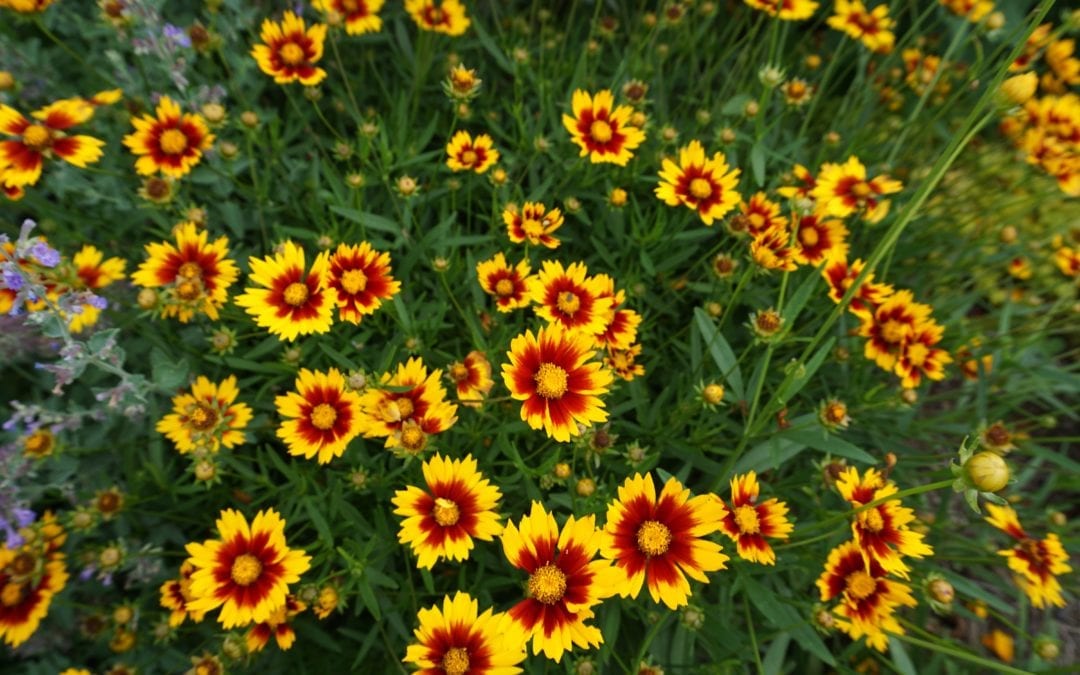One of the first questions that you might be asked when you visit the garden center is “How much light do you have?” All plants require sunlight to photosynthesize, but the amount that different plants need varies widely. Though many are adaptable and will grow in different exposures, features like vigor, flower and fruit production and the possibility of disease problems will be affected by less, or more than ideal light conditions.
Full sun means that the area has exposure to direct sun throughout the day, for no less than six hours. These areas can be hot and dry, and are often exposed to winter winds. Plants that thrive in these conditions need to be tough and adaptable.
Staghorn Sumac, or Rhus typhina, can be shrub-like or tree-like, depending on how it is pruned. The stems are covered in the dense, velvety hairs that give this plant its common name. Place it in a space where it has room to spread, as it tends to sucker. ‘Tiger Eyes’ boasts bright yellow foliage on the fuzzy, purple-pink stems and the all color is a glorious orange to scarlet.
Even though they’ve been around for a long time, Coreopsis gives you a great bang for your perennial dollar. The thread-leafed varieties in particular bloom from early summer until the first hard frost. Coreopsis are great fillers and weave nicely through any sunny perennial bed. And butterflies also love the billowing nonstop blooms.
Partial shade indicates that an area receives either a filtered flow of sunlight, perhaps through a canopy of trees for most of the day, or four to five hours of direct sunlight. Some plants that prefer part shade require it at certain times of the day. In our climate, broadleaf evergreens like Boxwood and Rhododendron, are plants that need sun to thrive, but require protection in the afternoon.
One of my favorite groups of perennials for semi-shade are the Coral Bells, or Heuchera. In the past couple of decades this genus has exploded into a huge group of wonderful plants. Mainly grown for their low mounding foliage, Coral Bells come in an array of leaf colors including gold, caramel, purple-black, plum with silver and just plain green. The wispy wands of flowers produced in early to mid-summer attract hummingbirds and catch even the gentlest breeze.
Koreanspice, or Viburnum carlesii is an old favorite whose popularity waxes and wanes. But it does have some borer issues. A much better choice is V. juddii. This species can be a little coarse in form, but it grows to a very manageable 6 to 8 foot height. The fall color can be a quite lovely yellow-orange to scarlet, if a bit variable. These shrubs are rock-stars in early May when clusters of coral-pink buds open to the palest creamy pink flowers with the most delicious scent imaginable. It will perfume your entire yard. In my dreams, most flowers smell like Koreanspice.
Full shade means that an area gets no direct sunlight throughout the whole day. These spaces are often more damp than other spots in your yard. In some cases, the air can get quite stagnant, so plants that thrive here tend to be disease resistant.
Snowberries, or Symphoricarpos, are often an overlooked plant. It will tolerate the deepest shade you can provide. Its arching shape doesn’t require much in the way of pruning and the small pale pink flowers can attract hummingbirds. The ‘Candy Sensation’ variety produces tons of pale pink berries in mid to late September.
Another underused late-blooming choice for the shade garden is Turtlehead, or Chelone. In August and September, this tall perennial with deep green foliage sports rose-pink flowers that are shaped like the heads of turtles. It makes a great backdrop for shorter plants like Ferns and Astilbe. Turtlehead is named for the nymph Chelone of Greek mythology. She insulted Zeus by refusing to attend his wedding and was turned into a turtle as a punishment.
Every one of these hard-working and adaptable plants can be the backbone of any garden, no matter what your level of expertise. They perform day in and day out and allow you to fill in the blanks with more experimental and unusual varieties or give you a palette of reliable, low maintenance plants you don’t have to fuss over. Either way, the results will make you stop, breathe, and perhaps, smell a few flowers.

